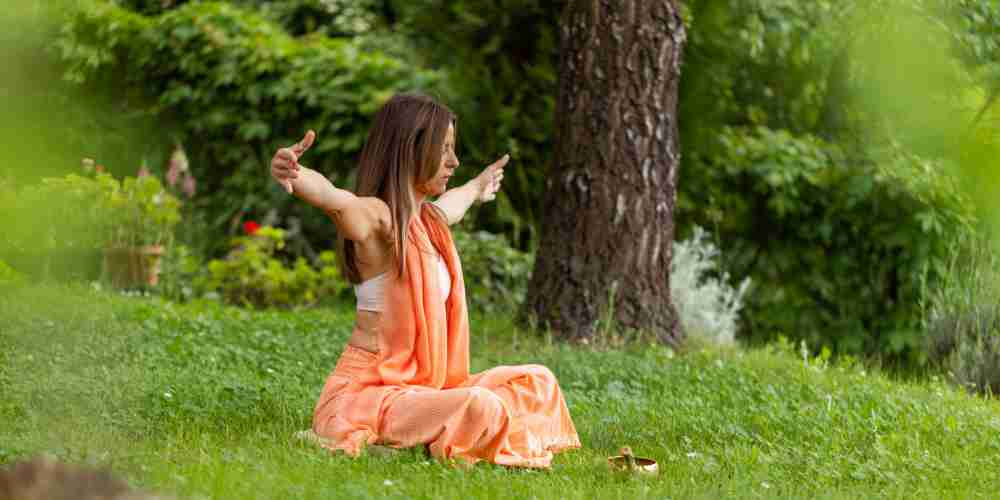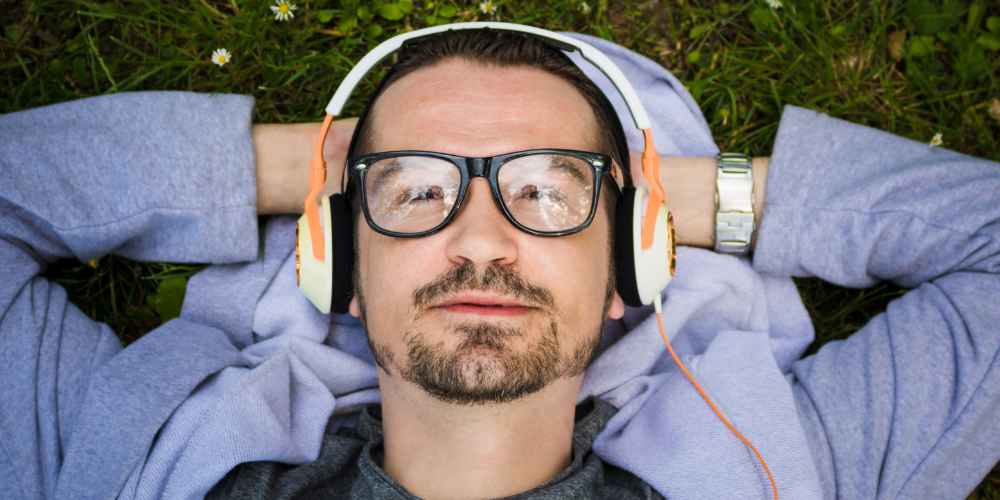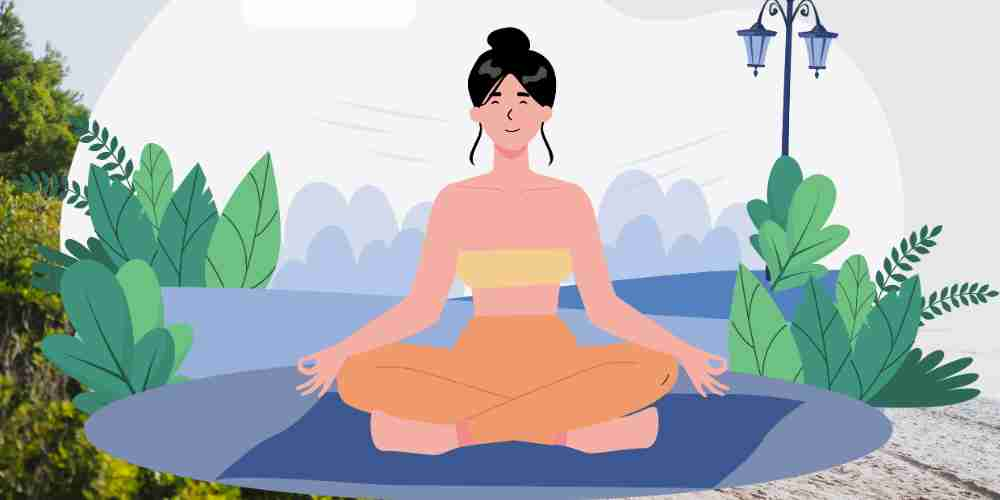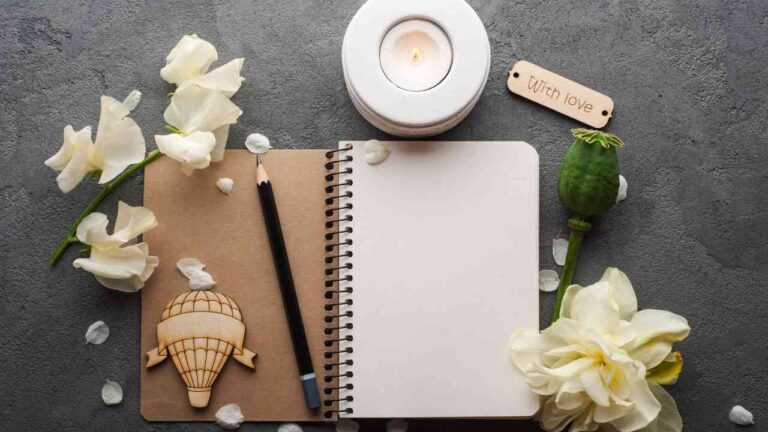Introduction
Mindfulness Practices for Anxiety Relief: Did you know just 10 minutes of mindfulness can break anxious thoughts? A study from the University of Waterloo showed that a brief meditation improved focus and performance. This shows mindfulness can help, even in short times. Anxiety is common in our fast world. But, there’s hope. Mindfulness, an ancient practice, is now a key part of mental health care. This guide will show you meditation and stress reduction strategies to find calm.
We’ll look at breathing exercises and body scan meditations. These practices have been proven to ease anxiety. We’ll also explore Mindfulness-Based Stress Reduction (MBSR) and Mindfulness-Based Cognitive Therapy (MBCT), two methods that have changed anxiety treatment.
If you’re new to mindfulness or want to deepen your practice, this guide has you covered. It offers practical, research-backed techniques to manage anxiety and find peace. Let’s start this journey to a calmer, more centered you.
Key Takeaways
- Just 10 minutes of mindfulness can help reduce anxious thought patterns
- MBSR and MBCT are proven effective in reducing anxiety symptoms
- Regular mindfulness practice can improve focus and sleep quality
- Outdoor mindfulness exercises offer enhanced benefits
- Consistent practice over time can make mindfulness feel more natural
- Free guided meditations are widely available online
- Setting intentions can help focus tasks and reduce anxiety
1. Understanding Mindfulness and Its Role in Mental Health
Mindfulness is now seen as a key way to boost mental health. We’ll look into what it is, its scientific backing, and how it affects the brain.
Defining Mindfulness in Modern Context
Mindfulness means being fully present and aware of your thoughts, feelings, and surroundings. It’s about noticing the moment without judgment. This practice encourages openness and curiosity towards the present.
The Science Behind Mindfulness
Studies show mindfulness helps with mental health. It can lessen anxiety and depression symptoms. A 2019 survey found more adults are stressed, showing the need for mindfulness as a coping tool.
How Mindfulness Affects the Brain
Research on the brain and mindfulness shows it can change brain structure and function. These changes help with attention and emotion control. Mindfulness also activates the parasympathetic nervous system, leading to relaxation and stress reduction.
| Mindfulness Impact | Percentage |
| Adults reporting sleep issues due to stress | 66% |
| Improved stress resilience with present-moment awareness | 100% |
| Reduction in chronic pain symptoms | 57% |
Adding mindfulness to daily life can improve mental health and overall well-being. It’s a natural, easy way to handle stress and find inner peace.
2. Mindfulness Practices for Anxiety Relief
Mindfulness exercises are great for easing anxiety. They help you step back from anxious thoughts, making them less intense. By facing tough emotions without getting overwhelmed, you can see your anxiety lessen over time. Recent studies have found mindfulness meditation as effective as some anti-anxiety drugs. A 2022 clinical trial showed it’s as good as escitalopram for anxiety and depression.
- Breathing exercises: Focus on your breath to calm your nervous system. Try breathing in three parts, enhancing the experience with imagery.
- Body scan meditation: Systematically relax different parts of your body, reducing physical tension.
- Present moment awareness: Engage your senses fully in activities like mindful tea drinking or nature walks.
- Meditative walking: Connect breath, body, and mind while improving balance and core stability.
- Guided meditation: Use audio guidance for deep relaxation and stress release.
Regular mindfulness practice brings lasting benefits. It can improve stress levels, depression symptoms, and even physical health like heart disease and diabetes. Adding these techniques to your daily life can help you feel calmer and more centered.
3. The Fundamentals of Mindfulness-Based Stress Reduction (MBSR)
The MBSR program is a key part of stress reduction. It was created over 40 years ago. It combines mindfulness and movement to help people deal with stress and anxiety.
Core Components of MBSR
The MBSR program starts with an orientation and weekly classes. It also includes an all-day retreat. Each day, participants spend 45-60 minutes on mindfulness exercises. It teaches kindness towards feelings of stress or anxiety. People learn to be present without judging themselves.
Historical Development and Research
Since 1979, over 25,000 people have gone through MBSR at the UMass Medical Center. In the last ten years, research on mindfulness has grown a lot. MBSR is often better than other treatments and as good as cognitive-behavioral therapy.
Benefits for Anxiety Management
Studies show MBSR is better than other treatments for anxiety. It helps people deal with anxiety, depression, stress, and chronic pain. Mindfulness from MBSR boosts well-being and helps stay focused on the present. The Live Online MBSR course costs $650 USD. It offers 31 hours of instruction. With small class sizes, it helps people connect and manage stress and anxiety well.
4. Essential Breathing Techniques for Immediate Anxiety Relief
Breathing exercises are a great way to manage anxiety. They calm the nervous system and help you stay in the moment. Here are some effective breathing exercises for quick anxiety relief. Square breathing, or box breathing, is simple yet effective. It has four parts: inhale, hold, exhale, and hold again, each for a count of four. It’s popular for its ability to relax and clear the mind, especially among athletes and military personnel.
Diaphragmatic breathing focuses on deep belly breathing. It can lower stress hormones in the body. To practice, put one hand on your chest and the other on your belly. Breathe deeply through your nose, letting your belly expand while keeping your chest still.
The 4-7-8 breathing technique, developed by Dr. Andrew Weil, is great for managing anxiety. Here’s how to do it:
- Inhale quietly through your nose for 4 seconds
- Hold your breath for 7 seconds
- Exhale completely through your mouth for 8 seconds
- Repeat this cycle up to 4 times
For a more advanced practice, try alternate nostril breathing (Nadi Shodhana). It balances the brain hemispheres, leading to emotional and physical balance. This technique involves alternating breath between nostrils and can be practiced for up to 10 cycles.
| Breathing Technique | Duration | Benefits |
| Square Breathing | 2-5 minutes | Promotes relaxation, improves focus |
| Diaphragmatic Breathing | 10 minutes daily | Reduces stress hormones, calms nervous system |
| 4-7-8 Technique | Up to 4 cycles | Induces relaxation, aids sleep |
| Alternate Nostril Breathing | Up to 10 cycles | Balances brain hemispheres, reduces stress |
Remember, regular practice of these breathing exercises can lead to lasting benefits. It can help reduce anxiety levels over time. If anxiety persists or affects your daily life, seek professional help.

5. Body Scan Meditation: A Comprehensive Guide
Body scan meditation is a powerful way to reduce stress and anxiety. It involves focusing on different parts of your body. This helps you notice physical sensations and relax.
- Preparing for Body Scan Practice: Find a quiet spot to start your meditation. You can lie down or sit comfortably. Aim for 30 to 40 minutes for a full session. Daily practice is best to see benefits.
- Step-by-Step Implementation: Begin with deep breaths to calm yourself. Then, slowly move your attention from toes to head. Notice any sensations without changing them. If your mind drifts, gently bring it back.
- Common Challenges and Solutions: It’s common for your mind to wander during meditation. Acknowledge the thought and refocus on your body. With time, you’ll stay focused longer.
| Challenge | Solution |
| Mind wandering | Gently redirect attention to body sensations |
| Discomfort | Adjust position or use props for support |
| Time constraints | Start with shorter sessions and gradually increase |
Studies show body scan meditation lowers cortisol, reduces inflammation, and improves sleep. Just 15 minutes a day can boost your stress management and well-being.
6. Incorporating Mindful Movement and Walking Meditation
Mindful movement and walking meditation are great ways to mix physical activity with mental focus. They help us notice our body’s feelings, breathing, and the world around us. This makes them perfect for those who struggle with sitting still.
Walking meditation turns a simple walk into a mindfulness exercise. Focus on each step, feeling your feet touch the ground. Notice your breath and how your body moves. You can do this anywhere, from busy city streets to peaceful nature trails.
- Light walking for 20 minutes can help with mild depression, anxiety, and focus issues
- Being in green spaces can make us happier and more attentive
- “Forest bathing” is good for both our mental and physical health
- Just a few minutes of mindful movement can improve our focus
You don’t need special gear or a lot of time to add mindful movement to your day. Try these easy exercises:
- Stand tall with your head up for two minutes to feel more confident
- Do open-postured yoga to feel energetic and strong
- Take a mindful walk during your lunch break
- Go “forest bathing” on weekends
Mixing mindfulness with movement can improve your physical and mental health. Many people love walking meditation after taking a mindfulness course. It becomes a regular part of their daily routine.
7. Present Moment Awareness Exercises
Managing anxiety starts with being in the present. By focusing on now, we can avoid worries about tomorrow and regrets about yesterday. Let’s look at some exercises to improve this skill.
Grounding Techniques
Grounding techniques keep us in the present. Try the 5-4-3-2-1 method: name 5 things you see, 4 things you feel, 3 things you hear, 2 things you smell, and 1 thing you taste. This exercise uses your senses to bring you back to the moment.
Sensory Awareness Practices
Focus on one sense at a time to improve sensory awareness. For example, during a meal, notice the taste, texture, and smell of your food. This can boost your present moment awareness by 35% in daily activities.
Mindful Observation Methods
Choose an object and observe it closely for a few minutes. Look at its color, shape, and texture. This simple act can calm anxious thoughts and improve focus. Studies show daily mindfulness exercises can increase present-moment awareness by 40%. Consistency is crucial. Spend 5-10 minutes each day on these exercises. With regular practice, staying grounded and managing anxiety will become easier.
8. Mindfulness-Based Cognitive Therapy (MBCT) Approaches
MBCT combines cognitive therapy with mindfulness. It was developed by Zindel Segal, Mark Williams, and John Teasdale. This method aims to stop depression from coming back. It also helps with anxiety and other mental health problems. The MBCT program lasts eight weeks. Each week, there are two-hour sessions. After the fifth week, there’s a full-day class. This setup helps people learn mindfulness skills and use them every day.
Studies show MBCT works well:
- It cuts down depression relapse risk by almost 50%
- It’s as good as keeping on antidepressants to stop it from coming back
- It might help with active depression
- It could also help with bipolar disorder and anxiety
MBCT teaches people to stay in the present without getting distracted. This skill helps deal with daily stress and negative thoughts. The program includes both group sessions and self-work, making it more effective.
| MBCT Component | Benefits |
| Mindfulness Practices | Improved present-moment awareness, stress reduction |
| Cognitive Therapy Techniques | Identifying and changing negative thought patterns |
| Group Sessions | Peer support, shared learning experiences |
| Self-Directed Work | Skill reinforcement, personal growth |
MBCT looks promising for preventing depression and managing anxiety. But, more research is needed for severe depression. As studies go on, MBCT might offer new hope for many mental health challenges.
9. Developing a Daily Mindfulness Routine
Creating a daily mindfulness routine can change your life. It helps you manage anxiety and boosts your well-being. By adding mindfulness habits to your day, you improve focus, self-awareness, and emotional control.
Morning Mindfulness Practices
Begin your day with purpose. Spend 10-15 minutes on meditation or deep breathing. This simple act aligns your thoughts with your emotions, leading to mindful actions all day.
Midday Reset Techniques
Take short breaks at work to refresh your mind. Try a body scan or mindful walking. These activities reduce stress and improve focus, helping you avoid autopilot behavior.
Evening Wind-down Exercises
Finish your day with calming exercises. Use gratitude journaling or gentle yoga for better sleep. These evening routines help you reflect on the day and prepare for rest.
Adding these mindfulness habits to your daily routine boosts your mental health. Studies show mindfulness practice improves resilience, relationships, and emotional control. By sticking to a mindfulness routine, you’re taking a big step towards managing anxiety and living a more balanced life.
10. Advanced Mindfulness Techniques for Chronic Anxiety
Advanced mindfulness offers powerful tools for those with chronic anxiety. These techniques go deeper into the mind-body connection. They help address persistent symptoms. Body scan meditation is a key approach. It involves focusing on different body parts to relax and become aware. It helps spot and release physical tension linked to anxiety.
Mindful breathing is another effective technique. It helps stay in the present moment, stopping worries about the future. This is great for when anxiety hits hard. Visualization exercises are also crucial. They involve imagining calm, safe places. This is very helpful for those anxious in specific situations or places.
| Technique | Benefits | Practice Duration |
| Body Scan Meditation | Reduces physical tension, improves body awareness | 15-30 minutes daily |
| Mindful Breathing | Interrupts anxious thoughts, promotes calm | 5-10 minutes, several times a day |
| Visualization | Creates mental safe spaces, reduces situational anxiety | 10-20 minutes daily |
Adding these advanced mindfulness techniques to your daily routine can greatly help with chronic anxiety. Regular practice boosts awareness of stress responses. It helps prevent anxiety from getting worse and improves life quality.

11. Integrating Mindfulness into Daily Activities
Mindful living is more than just meditation. It’s about making every moment count. Let’s look at how to make mindfulness a part of our daily lives. Begin your day with a mindful start. Take a few deep breaths before you get up. This sets a good vibe for the day. As you go about your morning, focus on each task. Notice the water on your skin, the taste of your breakfast, and the feel of your clothes.
At work, take short mindfulness breaks. Use reminders to pause and breathe deeply three times an hour. This can help you stay focused and calm. When you eat lunch, eat mindfully. Look at the colors, feel the textures, and enjoy the flavors of your food. Chew slowly and savor each bite.
Make your daily commute or errands a mindful journey. Pay attention to your surroundings. Notice the sights, sounds, and smells. Feel the ground as you walk. This makes everyday tasks more meaningful.
| Daily Activity | Mindfulness Practice | Benefit |
| Morning routine | Deep breathing, focused attention | Sets positive tone for the day |
| Work breaks | Three-breath meditation | Improves focus, reduces stress |
| Eating | Mindful eating | Enhances enjoyment, aids digestion |
| Commuting | Sensory awareness | Reduces boredom, increases presence |
End your day with gratitude. Before sleep, think of three good things that happened. This can help you sleep better and feel happier. By adding these mindfulness tips to your daily life, you can live more fully and peacefully.
12. Measuring Progress and Maintaining Practice
Tracking your mindfulness progress and keeping up with your practice are crucial. A study with 39 studies and 1,140 participants showed mindfulness-based therapy helps with anxiety and mood. It’s moderately effective.
Tracking Your Mindfulness Journey
Writing down your mindfulness practice keeps you motivated and shows your growth. Use a journal or app to track your daily practice, mood, and challenges.
Overcoming Common Obstacles
Many face challenges in keeping up with mindfulness. Issues like lack of time, motivation, or seeing results can stop you. To beat these, set achievable goals, practice at the same time each day, and remember the long-term benefits.
Adjusting Practices for Better Results
As you grow, you might need to change your mindfulness techniques. Find what works for you and try new things. Self-compassion is key in this journey.
| Aspect | Strategy | Benefit |
| Tracking | Use a mindfulness journal | Visualize progress |
| Obstacles | Set realistic daily goals | Improve consistency |
| Adjustments | Experiment with techniques | Enhance effectiveness |
Remember, mindfulness is a personal journey. Be patient with yourself as you learn this skill. It’s great for managing anxiety and improving your well-being.
Conclusion
Mindfulness offers strong tools for fighting anxiety, as our guide has shown. It does more than just calm us down right away. It also boosts our mental health and happiness. By using mindful breathing, body scan meditation, and staying in the moment, we can handle anxiety better.
Studies back up the power of mindfulness. They show it lowers stress hormones and helps us handle our feelings better. A big review of over 200 studies found it’s great for lessening stress, anxiety, and sadness. This shows mindfulness is a big help in managing anxiety.
This guide has given you a good look at mindfulness for anxiety relief. But remember, sticking with it is crucial. Try out different methods to see what works for you. For beginners, apps with guided meditations are a good start.
If anxiety keeps coming back or gets in the way of your life, get help. Talk to anxiety psychologists or clinical psychologists. With time and effort, mindfulness can be a strong friend in your fight for better mental health and less anxiety.
FAQs (Frequently Asked Ques)
What is Mindfulness-Based Stress Reduction (MBSR) and how effective is it for anxiety?
MBSR is an 8-week program by Jon Kabat-Zinn. It combines teaching, mindfulness, and movement. It’s been shown to reduce anxiety and panic. It teaches you to be kind to your stressed feelings, helping you feel better over time.
What is the difference between Mindfulness-Based Stress Reduction (MBSR) and Mindfulness-Based Cognitive Therapy (MBCT)?
MBSR focuses on stress reduction for various conditions, including anxiety. MBCT is for preventing depressive relapse. It combines cognitive therapy with mindfulness. MBSR is more general, while MBCT targets thought patterns that lead to anxiety and depression.
What is the 3 3 3 rule for anxiety?
The 3-3-3 rule for anxiety involves looking around and naming 3 things you can see, 3 things you can hear, and 3 things you can feel. This technique helps ground you in the present moment, making it a helpful mindfulness practice for anxiety relief.
How do you practice mindfulness for anxiety?
Practicing mindfulness for anxiety relief involves focusing on your breath, observing your thoughts without judgment, and staying present. Techniques like body scans and mindful breathing can calm your mind and reduce anxiety.
What are the 9 ways that mindfulness reduces stress?
Mindfulness reduces stress through:
- Enhanced emotional regulation
- Increased self-awareness
- Improved concentration
- Better sleep
- Reduced muscle tension
- Increased acceptance
- Better resilience
- Increased empathy
- Lowered cortisol levels.
These are all part of mindfulness practices for anxiety relief.
Which mindfulness practice is most effective for calming anxiety in the workplace?
Deep breathing exercises and mindful pauses are effective mindfulness practices for anxiety relief in the workplace. Taking short breaks to focus on your breath can help reduce stress and improve focus.
What are the 4 C’s of anxiety?
The 4 C’s of anxiety are:
- Calm: Bringing your body and mind to a state of calm.
- Control: Gaining control over your thoughts and actions.
- Confidence: Boosting confidence in handling anxiety.
- Courage: Having the courage to face and manage anxious moments.
These align with mindfulness practices for anxiety relief by helping regulate emotions.
What is the 54321 method?
The 54321 method is a grounding technique where you name 5 things you can see, 4 things you can touch, 3 things you can hear, 2 things you can smell, and 1 thing you can taste. This method helps refocus the mind and reduce anxiety, which complements mindfulness practices for anxiety relief.
What are the 4 F’s of anxiety?
The 4 F’s of anxiety are:
- Fight
- Flight
- Freeze
- Fawn.
These are common responses to anxiety, and mindfulness practices for anxiety relief help you recognize and manage these reactions.
What is the best exercise for anxiety?
The best exercise for anxiety is mindfulness meditation combined with physical activity like yoga or walking. These practices help calm the mind and reduce stress, making them effective mindfulness practices for anxiety relief.
How to shut down anxious thoughts?
To shut down anxious thoughts, practice mindfulness by focusing on your breath or engaging in a grounding exercise like the 54321 method. Redirecting attention to the present moment can help reduce anxiety and prevent overthinking.
Sources Links
- Meditation for Anxiety
- Can mindfulness exercises help me?
- Mindfulness Tricks to Help Reduce Anxiety
- Benefits of Mindfulness – HelpGuide.org
- How to Manage Stress with Mindfulness and Meditation
- 6 Mindfulness Exercises for Anxiety and Stress You Need to Know
- 8 Mindfulness Exercises That Also Reduce Stress
- 7 Ways to Be More Mindful Without Meditating
- Mindfulness-Based Interventions for Anxiety and Depression
- MBSR 8-Week Online Live | UMass Memorial Health
- 3 Easy Anxiety Relief Exercises You Can Use Anywhere
- 8 Breathing Exercises for Anxiety You Can Try Right Now
- Breathing Techniques for Anxiety Relief
- Release Tension With This Targeted Meditation Technique
- Beginner’s Body Scan Meditation








[…] practicing mindfulness, you become more aware of your emotions and how they affect your body and mind. This awareness […]
[…] present in conversations deepens connections with others, fostering empathy and understanding. Mindfulness improves active listening, reduces reactive responses, and strengthens bonds by allowing you to […]